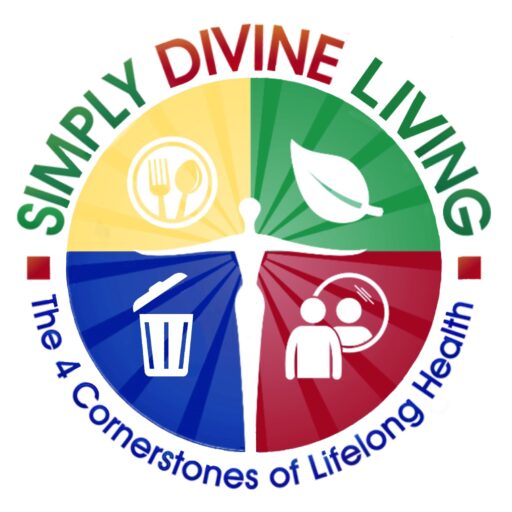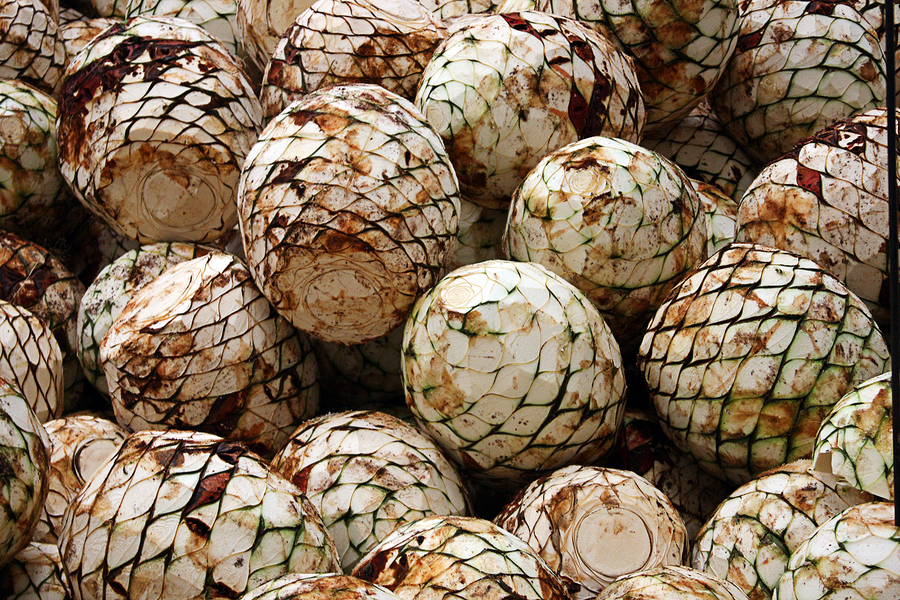Everyone is looking for a healthy sugar replacement. We all know that refined sugar is not good for us, and we are trying to find something better. For years agave has been hailed as the low glycemic solution to all our sweet-tooth cravings. Recently, however, there has been a lot of talk about whether agave is really good or bad. Or is it both? I have not found a complete explanation of the topic anywhere, so I am sharing it with you here. In just four minutes I can show you exactly where agave stands in the great sugar debate.
Is All Sugar, Simply Sugar?
The food industry argues that sugar is just sugar, and the form doesn’t matter. Both logic and chemistry tell us otherwise. The sugar you eat breaks down into two simple forms, glucose and fructose. But those two forms have completely different metabolic pathways in your body. Glucose is the energy source for our cells. Small, continuous doses (released slowly from inside complex food) are essential for life. High doses (sweeteners that have been extracted and concentrated), spike our blood sugar and lead to weight, heart, and insulin problems. This discovery led to the creation of the glycemic index, which measures the degree to which different foods impact our blood sugar. With our awareness of the glycemic issue, a new search began for low glycemic sweeteners that wouldn’t upset our delicate blood sugar balance, and fructose seemed to be the answer.
Here is the problem. Fructose is not necessary for a single function in the human body, so it is sent to the liver for elimination. Now if you know much about the liver, you know its main job is to process toxins. That is exactly what fructose becomes in large amounts. If a small amount of fructose enters the liver at a slow rate, such as when we eat a single piece of fiber-rich whole fruit, the liver can burn it as part of the Krebs cycle. But when large amounts reach the liver, it causes a toxic chain reaction that affects your entire body.
The popularity of agave is an example of this misunderstanding. Wahoo, everyone cried! A low glycemic liquid sweetener that is easy to add to recipes, drinks, and is even VEGAN (as opposed to honey). I know many people who use agave for that one reason alone. But we have to look at a bigger picture than that when we make any food choices. Here the chemistry matters much more than the animal/non-animal issue. The reason agave is lower on the glycemic index is that it is 70-90% fructose. That means it is 70-90% useless and toxic in a human body. This is a concealed disaster that actually fuels diabetes, heart disease, obesity, inflammation, and much more. You’ll be shocked at how dramatically concentrated fructose sabotages all your other healthy efforts! So keep reading!
The Fructose Path of Destruction
- The first thing that happens when fructose enters your liver is the production of uric acid, which causes gout and raises blood pressure.
- Then it releases enzymes that signal your body to start making fat. This is not the fat you are eating, this is fat that is made inside of you. 30% of the fructose we consume will be converted by your body into fat. Some of that fat can’t get out of the liver, and so contributes to fatty liver disease, just like alcohol.
- Fructose also raises VLDL (very low density lipoproteins) and triglycerides which are the key contributors to heart disease.
- Then fructose activates the enzyme JUNK1, which promotes inflammation. Inflammation is a huge contributor to heart disease, arthritis, asthma, and most other modern diseases.
- The last step of the fructose chain is the final ax to the tree of our health. At this point the fructose inactivates insulin in the liver so that the pancreas has to work even harder and raise our insulin levels more. This increased insulin blocks your brain from recognizing the hormone leptin. Leptin is the hormone that tells your body you are full and can stop eating. So when we eat fructose, our brain mistakenly thinks it’s starving at the same time it is programmed to make more fat.
Since agave contains the highest fructose percentage of any sweetener, even higher than high-fructose corn syrup, it fuels this downward spiral more than anything else.
Is There a “Good” Natural Form of Agave?
The question then becomes, is all agave problematic? Isn’t it natural? What about raw versions? Don’t some companies claim they use a superior process that yields a healthier product? To understand the answers to these important questions, let’s look at how agave nectar or syrup is made.
The agave plant stores its carbohydrates as inulin instead of as starches. Inulin is part of the family of fructans or FOS (fructooligosaccharides). These are polysaccharides, meaning they are complex molecules made up of more than two sugars. Inulin is not digestible and not sweet, but is a good prebiotic that supports the growth of healthy bacteria in your intestinal tract. So the natural “juice” of this plant is not something you would choose to eat for taste, though indigenous people have used it medicinally.
So how does this bitter, natural product become the sweet agave syrup we find in the local grocery store? To make the agave liquid sweet, the inulin must be converted from its complex form into simple sugars, fructose and glucose. This is where the problem lies, because no matter what form or brand of agave nectar you buy, you are not buying the liquid that comes naturally from the plant. Agave “nectar” is not a natural product. It is a modern concentrated, chemically converted creation that just happens to be derived from the natural agave liquid.
The modern process that was invented to convert the inulin into sugars is called hydrolysis. I have found 3 different ways this is done. One is by high heat for a short time. This makes traditional agave nectar. Raw agave is hydrolyzed by using heat below 120° for a longer time, or by a patented process using vacuum evaporation and natural enzymes from black mold (Aspergillus niger). No matter which method they use, the goal is to convert that natural inulin into fructose, so it tastes sweet. It then goes through various degrees of filtering to remove other components.
If nature, which is much smarter than us, creates complex inulin instead of concentrated fructose, maybe we should pay attention. Anytime we start converting natural foods into “new” forms we tend to create “new” disease. Right now the sweetener under attack in public circles is high fructose corn-syrup. Just like agave, corn syrup is put through a chemical process to increase the fructose content to make it sweeter. Though agave is converted to glucose and fructose in a less toxic way than corn syrup, agave is worse than corn syrup in one respect. High fructose corn syrup is around 60% fructose. But agave contains even a greater percentage of fructose. Even the company Xgave, which claims they have the “healthy” form of agave, has a 3:1 ratio of fructose to glucose in their agave nectar. That is 75% fructose! Other brands are even higher. As we learned at the beginning of this discussion, we can say for certain that extracted, concentrated fructose is a disaster for health.
The Real Sugar Solution
So what is the solution? Am I advocating returning to white sugar? Absolutely not. Refined sugar (including white, brown, and “raw”) is also an extracted, concentrated sugar that still extremely detrimental to your health. What we need to do is eat sugar in the complex forms that nature created. Then it comes with all the necessary co-factors to help your body process it effectively.
Whole fruit is a wonderful source of healthy sweetness. Dates can sweeten recipes without any of those nasty side effects. Pure stevia (not the processed forms like Truvia) is another great solution. And small amounts of raw honey also have beneficial effects on our health. Trust the system that nature gave us. Eat sugar in the forms and quantities that exist naturally. Avoid extracted, concentrated forms of sugar, including agave. Then you have your cake and find the health you are seeking. For example, click HERE for my healthy fudge recipe!
If you want to learn all the ins and outs of how to eat sugar, fat, grains, and proteins in ways that support your health, as well as how to heal your digestive system, join us at the online Simply Divine Eating Community. We have classes, recipes, weekly emails, online support groups, and hands-on cooking retreats to teach and support you every step of the way. Our goal is to help you open the “user manual” to your unique body, so that you become your own expert. No diets, no confusion. Just health, peace and joy with yummy food that will allow you to unlock your ultimate health.
For more information on agave…
You can read more about agave processing from the companies that sell it. These companies are trying to use PR to fight back against the realization of the negative consequences of the high fructose composition of agave. But in every single case, you will see in their own information that to make agave a “sweet” nectar, it must be converted from its natural inulin form into concentrated fructose. That is the problem.
http://www.wholeandnatural.com/servlet/the-template/agave%20facts/Page#.U9FgVZ4g8vg
http://www.wholesomesweeteners.com/agavefactvsfiction.aspx
http://www.xagave.com/dispelling-agave-myths.html
For much more discussion of the processing of fructose, read Fat Chance, by Robert Lustig.


Thank you for this article, it was very well written! I have avoided agave nectar and plan to continue to do so.
I use pure Stevia concentrate, certified organic. It is processed (it isn’t the green stuff) but I still feel it is better than many alternatives.
I also use raw honey, raspadura sugar and coconut palm sugar, in moderation.
Thanks for posting this brilliant post. I’ve been reading for a while however I’ve never posted a comment.
I’ve bookmarked your site and shared this on my Twitter.
Many thanks again for a quality article!